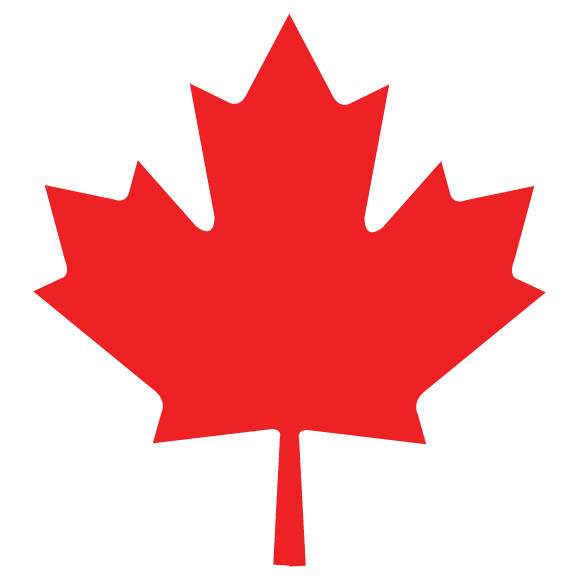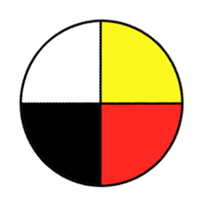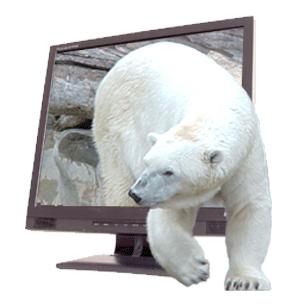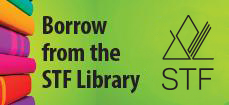
Episode 3 - At the Trapline
In this episode, the focus is learning to count in Cree.





Episode 1: Animals of the North In this episode, Cree words for animals are featured.





Episode 9 - Camping with My Family
In this episode, the focus is learning the Cree words associated with camping.





Episode 8 - Catching Fish
In this episode, the focus is learning the Cree words for adjectives.





Episode 6 - Hunting in the Fall
In this episode, the focus is learning the Cree words for various actions.





Episode 5 - Making Moccasins
In this episode, the focus is learning colors in Cree.





Episode 10 - The Big Talent Show
In this episode, the focus is learning the Cree words for things seen at a talent show.





Episode 2: Winter Play - In this episode, Cree words for family members are featured.








The manual contains thematic modules comparing traditional and modern artists and their works from each of the five major cultural regions. Activities are suggested for each of the curriculum components. Included are biographies of artists, maps, timelines, assessment activities, bibliographies and a glossary.
These resources contain significant Canadian content. One module in each kit focuses on Plains art work, but the inclusion of Arapaho of Kansas and Oklahoma under the heading "Métis" may cause confusion. The map on page 19 in each manual shows where individual artists live/lived, but the actual cultures are more widespread.
Both kits are useful for the elementary level.










Accompanying the book is a 7-minute DVD, featuring a dance from the Youth Ballet Company of Saskatchewan's 2005 school recital.

This second season of Stories of the North Season features “Mooshom” (played by Morris Cook) and his granddaughters “Natanis” and “Sekwan” (played by Claire Walker and Mya Hoskins-Fiddler) and their life in Saskatchewan’s north. Part live action, part animation, this children's series of short Indigenous language-based stories uses common events and themes of the North, presented in the oral story telling traditional, with Mooshum teaching Cree words to his granddaughters in the process. Season 2 offers10 episodes of 7 minutes each.
Episode 10: The Big Lodge
Mooshom tells a story about his journey to a ceremony





This second season of Stories of the North Season features “Mooshom” (played by Morris Cook) and his granddaughters “Natanis” and “Sekwan” (played by Claire Walker and Mya Hoskins-Fiddler) and their life in Saskatchewan’s north. Part live action, part animation, this children's series of short Indigenous language-based stories uses common events and themes of the North, presented in the oral story telling traditional, with Mooshum teaching Cree words to his granddaughters in the process. Season 2 offers10 episodes of 7 minutes each.
Episode 1: Let's Bake a Cake
Mooshom tells a story for Indigenous People's Day





This second season of Stories of the North Season features “Mooshom” (played by Morris Cook) and his granddaughters “Natanis” and “Sekwan” (played by Claire Walker and Mya Hoskins-Fiddler) and their life in Saskatchewan’s north. Part live action, part animation, this children's series of short Indigenous language-based stories uses common events and themes of the North, presented in the oral story telling traditional, with Mooshum teaching Cree words to his granddaughters in the process. Season 2 offers10 episodes of 7 minutes each.
Episode 2: Bannock With Aunty
Mooshom tells a story of learning how to make bannock.





This second season of Stories of the North Season features “Mooshom” (played by Morris Cook) and his granddaughters “Natanis” and “Sekwan” (played by Claire Walker and Mya Hoskins-Fiddler) and their life in Saskatchewan’s north. Part live action, part animation, this children's series of short Indigenous language-based stories uses common events and themes of the North, presented in the oral story telling traditional, with Mooshum teaching Cree words to his granddaughters in the process. Season 2 offers10 episodes of 7 minutes each.
Episode 3: Kinship
Mooshom tells a story about all of our relations.





This second season of Stories of the North Season features “Mooshom” (played by Morris Cook) and his granddaughters “Natanis” and “Sekwan” (played by Claire Walker and Mya Hoskins-Fiddler) and their life in Saskatchewan’s north. Part live action, part animation, this children's series of short Indigenous language-based stories uses common events and themes of the North, presented in the oral story telling traditional, with Mooshum teaching Cree words to his granddaughters in the process. Season 2 offers10 episodes of 7 minutes each.
Episode 4: The Walk to Mooshom's Place
Mooshom tells a story of his journey through the forest and community.





This second season of Stories of the North Season features “Mooshom” (played by Morris Cook) and his granddaughters “Natanis” and “Sekwan” (played by Claire Walker and Mya Hoskins-Fiddler) and their life in Saskatchewan’s north. Part live action, part animation, this children's series of short Indigenous language-based stories uses common events and themes of the North, presented in the oral story telling traditional, with Mooshum teaching Cree words to his granddaughters in the process. Season 2 offers10 episodes of 7 minutes each.
Episode 5: Where the Little People Dance
Moshom tells a story about the Little People





This second season of Stories of the North Season features “Mooshom” (played by Morris Cook) and his granddaughters “Natanis” and “Sekwan” (played by Claire Walker and Mya Hoskins-Fiddler) and their life in Saskatchewan’s north. Part live action, part animation, this children's series of short Indigenous language-based stories uses common events and themes of the North, presented in the oral story telling traditional, with Mooshum teaching Cree words to his granddaughters in the process. Season 2 offers10 episodes of 7 minutes each.
Episode 6: Grandmother Spider
Mooshom tells a story about spiders and why they are important.





This second season of Stories of the North Season features “Mooshom” (played by Morris Cook) and his granddaughters “Natanis” and “Sekwan” (played by Claire Walker and Mya Hoskins-Fiddler) and their life in Saskatchewan’s north. Part live action, part animation, this children's series of short Indigenous language-based stories uses common events and themes of the North, presented in the oral story telling traditional, with Mooshum teaching Cree words to his granddaughters in the process. Season 2 offers10 episodes of 7 minutes each.
Episode 7: The Fishing Trip
Mooshom tells a story about his fishing trip with his father.





This second season of Stories of the North Season features “Mooshom” (played by Morris Cook) and his granddaughters “Natanis” and “Sekwan” (played by Claire Walker and Mya Hoskins-Fiddler) and their life in Saskatchewan’s north. Part live action, part animation, this children's series of short Indigenous language-based stories uses common events and themes of the North, presented in the oral story telling traditional, with Mooshum teaching Cree words to his granddaughters in the process. Season 2 offers10 episodes of 7 minutes each.
Episode 8: The Thunderbirds
Mooshom tells a story about Thunderbirds.





This second season of Stories of the North Season features “Mooshom” (played by Morris Cook) and his granddaughters “Natanis” and “Sekwan” (played by Claire Walker and Mya Hoskins-Fiddler) and their life in Saskatchewan’s north. Part live action, part animation, this children's series of short Indigenous language-based stories uses common events and themes of the North, presented in the oral story telling traditional, with Mooshum teaching Cree words to his granddaughters in the process. Season 2 offers10 episodes of 7 minutes each.
Episode 9: We Are Related
Mooshom tells a story about how all things are related








Overhead transparencies of all images are also available.
Episode 7 - Favourite Foods
In this episode, the focus is learning the Cree words for foods of the North.





Episode 4 - Summer at the Cabin
In this episode, the focus is learning the Cree words for things we see in Summer







The key-shaped instruction booklet includes a teacher's guide and 20 creative dance structures with over 60 variations. It offers clear, descriptive directions. The 60-minute DVD shows elementary level children demonstrating the 20 basic dance lessons. The 12 word rings contain over 1,200 words that have the potential to help extend vocabulary and imagination. An endless expansion of movement options occurs when the word rings are combined with the dance structures on the keys. The kit offers 95 minutes of a variety of instrumental music on compact disc.




A teacher's guide is available.













1. Best Chums Forever 7. White Buffalo 13. Goose Call
2. Turtles Everywhere 8. Let Loose the Moose 14. Elk Lodge Dance
3. Loonie Tune 9. Flight Path 15. Thunderbird
4. Duck, Duck, Fly 10. We Pelican’s Fish 16. Spirit of the Land
5. Squirrelly for Nuts 11. Outfoxed 17. Nothing to Crow About
6. Bear Paws 12. Raccoon fire 18. Beaver Tales











A companion CD contains the story and special sound effects.










These engaging DVDs present storytelling in the oral tradition of the First Nations culture using authentic voices. Effective use of animation and live-action wildlife footage help to bring the legends to life. The humorous and contemporary DVDs will appeal to a wide range of audiences.
Each teacher's guide provides a story synopsis, learning outcomes, cross-curricular connections and a variety of engaging activities to accommodate different learning approaches. Supplemental resources listed in the bibliography include print, videos and websites.






This story is also available on video.















This document will assist individuals and communities to engage in meaningful discussions and actions to respond to the experiences, perspectives and needs of students and families who are gender and/or sexually diverse (GSD).
Content includes:
- Gender and Sexual Diversity
- First Nations and Métis Ways of Knowing
- Assumptions, Privilege and Oppression
- Comprehensive School Community Health (CSCH)
- CSCH Approach to Creating Inclusive Schools























and grades. Suggested curriculum outcomes are identified and, if applicable, supporting indicators
are noted.












The purpose of the presentation is to describe strategies teachers can use to approach content that may be perceived as sensitive in their community in order to:
- ensure the learning environment is safe for respectful dialogue;
- teach students how to think critically about any topic with an open mind; and,
- meet curricular outcomes.





Saskatchewan context, differentiation is addressed through the Adaptive Dimension which enables all teachers to respond to student diversity, including their strengths and needs, interests, backgrounds, life experiences and motivations.

















